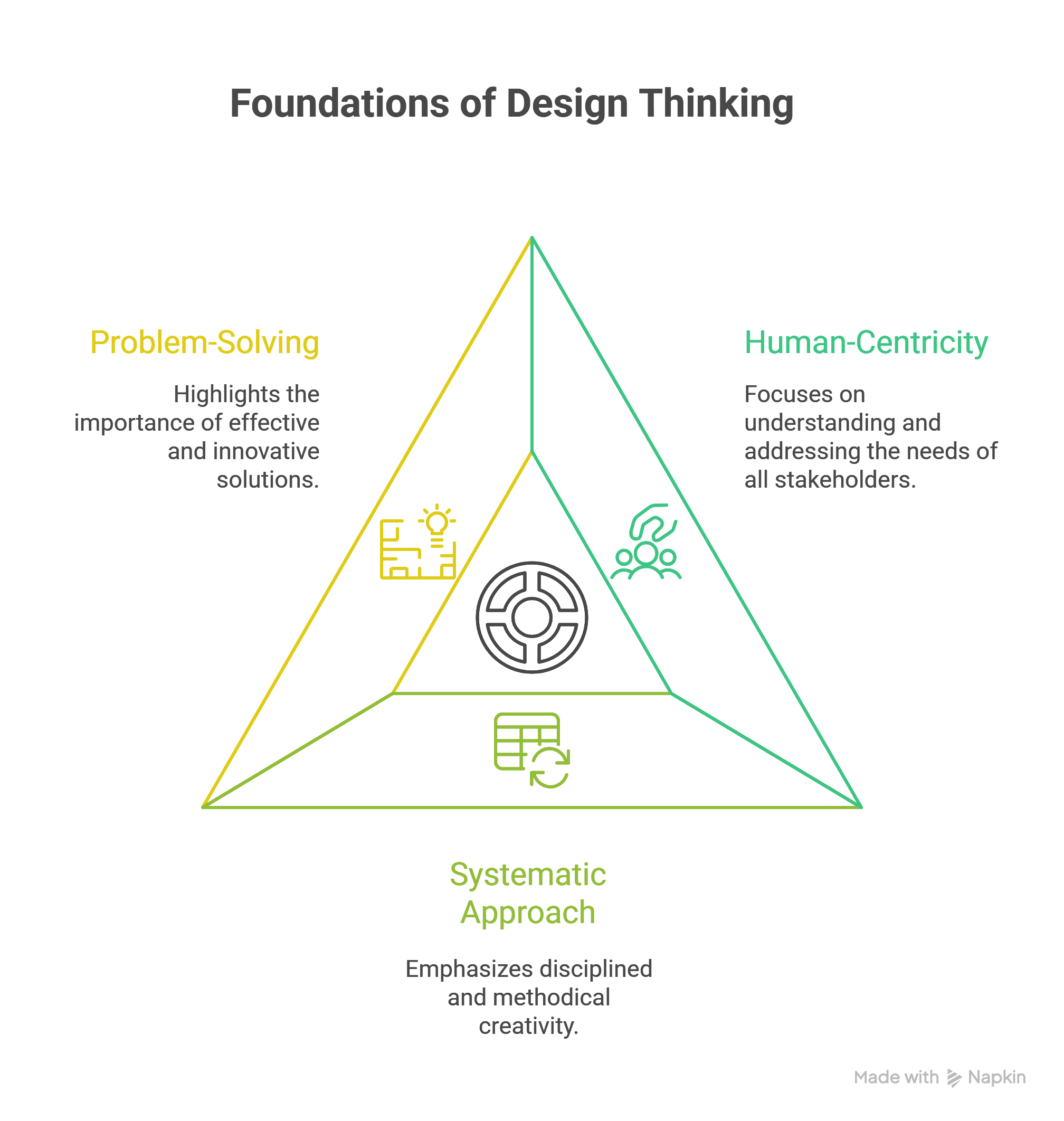Fundamentals of Design Thinking
Design Thinking
Design thinking is a human-centric, systematic model of problem-solving. This definition has three key elements: human-centricity, systematic, and problem-solving.
Human-Centricity
Human-centricity involves considering the human behind the problem, such as a consumer, supplier, partner, employee, distributor, or investor. We often get so caught up in the problem itself—whether it's a process, product, or technology problem—that we forget to consider the people it affects. The world isn't always designed with the human in mind, which can lead to overly complex products and processes.
-
Examples of Non-Human-Centric Design:
- Regulatory-Centric Airline Debriefing: Flight attendants prioritize regulatory compliance by giving a quick, one-breath debriefing on emergency exits, rather than ensuring the passenger actually understands or can perform the task.
- Policy-Centric Reimbursement Processes: Corporate expense reimbursement processes are often designed around policies instead of making the process easy for the employee.
- Product-Centric Apple: For a long time, Apple's charging cords were not compatible with other phones' C-type chargers, demonstrating a focus on the product rather than the user's convenience.
-
Examples of Human-Centric Design:
- Children's Toys: Toys like Lego blocks are well-designed because they don't require a manual; children can learn by doing, discovering new ways to play.
- Video Games: Similarly, people start playing video games without reading instructions, learning as they go.
- Products for the Elderly: These are often well-designed because the human user is kept in mind.
It's important to differentiate between human-centricity and customer-centricity. Design thinking focuses on all humans, not just the customer. The example of Nestle Cerelac illustrates this well: the human stakeholders include the baby, mother, father, maid, grandmother, pharmacist, and doctor, all of whom have different needs and priorities. No single stakeholder is the "most important customer" because the product's success depends on all of them.
To be human-centric, one must develop empathy and compassion.
Systematic
Being systematic means being disciplined and methodical in creativity. There's a common misconception that discipline kills creativity. However, a methodical approach allows others to learn from and demystify your process.
Instead of relying on ad-hoc or improvisational methods (what is sometimes called "jugaad"), design thinking advocates for a disciplined approach. The most successful people, from athletes like Roger Federer to chess players like Magnus Carlsen, are highly disciplined. Being systematic reduces reliance on chance and helps you achieve global respect.
Problem-Solving
The core of design thinking is problem-solving. It's not just about designing a product, but about designing your own thinking to solve problems more effectively. The solution can be a product, a service, or any other solution. Our entire lives are about solving problems, from managing a weekend plan to organizing a work schedule. By learning to solve problems more systematically, we can tackle larger, more complex issues facing the world today, such as climate change, unemployment, and social crises.Foundations of Design Thinking


No Comments